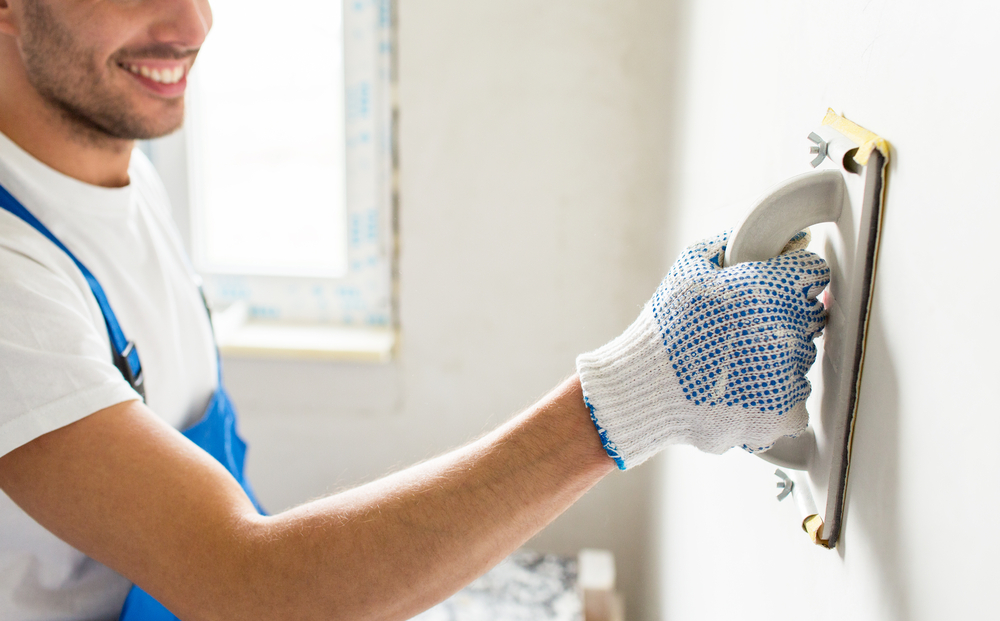With the summer sun comes brighter, longer days — the perfect time to implement new inspirations and ideas in your home. Whether you have just purchased a brand new home or you are thinking of renovating your current one, chances are at some point your walls will need an overhaul. This may include re-plastering the wall, and painting or adding new wallpaper.
While it may not be noticeable, minor defects arise through the everyday use of your walls, and heat and condensation are two major contributing factors of deterioration. Renovation, therefore, is necessary not just for aesthetic purposes, but also to improve the overall health of your living space. In this guide, you will find valuable tips on skimming a wall, the costs involved and the best materials to use.
Should I Skim a Wall Myself?
With a little skill and experience, home improvements can be done yourself. However, this requires much planning, time and effort — and a lot can go wrong. Such tasks are best left to the experts, who have the long-term skill and experience to get the job done effectively and produce the perfect finish. There are plenty of plasterers in London and all over the UK that are available to help at an affordable price. However, if you’re set on giving it a go yourself, check out our top tips for a job well done.
What Is the Best Material to Skim a Wall?
Choosing the correct plaster is essential for a long-lasting, healthy wall. Before renovating your home, your plasterer will most likely ask which room in the house the wall in question is in. The plaster that you’ll need to use will depend on the surface of the wall itself — if the wrong plaster is used, you risk being threatened by mould.
Due to their moisture-regulating properties, gypsum-based adhesive plasters are best for indoor use. For wetter rooms such as bathrooms, it is better to resort to lime cement-based plasters. Using a gypsum-based plaster in your bathroom could cause mould due to regular high levels of condensation. If you’re being plagued by mould, it’s a good idea to get rid of it before plastering your walls.
Both types of plaster are available as ready mixes, which only have to be mixed with water.
How to Skim Coat a Wall
To skim a wall, you will first need a shovel. This should be made from stainless steel, or else the plaster may cause rust spots. A shovel is used to raise the plaster and to work around the areas on windows and door frames. A sponge board is also needed to felt the plaster surface during the setting process.
To create the right consistency for your plaster mix, apply water in the middle of the dry plaster. The plaster will then need to be mixed under high pressure while using the shovel. At this stage, the mixing must be done very quickly to avoid the plaster drying up.
Now it’s time to prepare your wall! The preparatory work must be done carefully to save you a lot of work later on. Before applying the plaster mixture, remove any dirt and loose particles from your wall. When plastering an old building wall, it’s also important to first use a brush to wet the surface so that the plaster will last longer.
When applying the plaster to your wall, begin by using a cleaning gauge to apply the plaster evenly. Once dried, any stains and bumps can be finished with sandpaper.
If you are planning to paint your wall or add wallpaper, you should only do this when the plaster has fully dried and hardened. It is critical to follow the manufacturer’s instructions for your chosen plaster, because the materials used can affect the drying process.
How Much Does It Cost to Skim a Wall? Labour Costs and Materials
Like most handyman jobs, the cost of skimming a wall will depend on how big the job is. There will likely be a minimum cost per job, which you can see outlined in the table below.
You can also check out Hamuch.com, where you will find an extensive list of experienced plastering companies in London. Our database of experienced plasterers also includes regularly updated hourly and daily prices, allowing you get an accurate estimate for the job you need.
|
Description |
Price |
Duration |
|
Patch Repair |
£150 |
2 – 3 Hours |
|
Whole Wall |
£200 |
3 – 4 Hours |
|
Whole Room |
£300 |
6 – 8 Hours |
Are you looking for a plasterer in London for your wall-skimming needs? We only list fully vetted and qualified traders, giving you peace of mind that any job you need will be completed to a high standard and at a competitive cost. Find a tradesman in your area and get an instant quote today!
